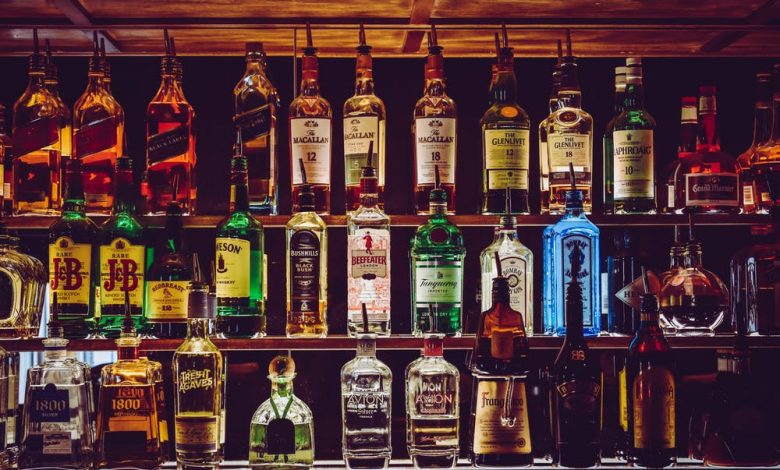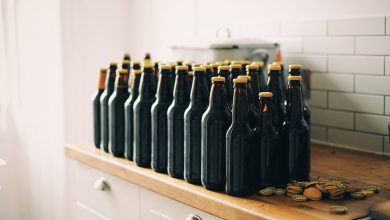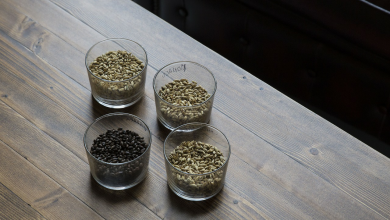Wine-Making vs. Beer Brewing: Basic Similarities and Underlying Differences

If there is anything like an unending battle of supremacy in the brewery industry, it is no other than the wine-making vs. beer brewing topic. Whenever it comes up, it often pits consumers against each other. While some regard beer to be an inexpensive drink for common people, others think of wine as an expensive drink for classy people only.
The truth is, both beer and wine-making processes share some similarities, as well as some differences. And despite the perception of most consumers, beer can also appeal to the elite and classy people.
In general, these alcoholic beverages have been among us for thousands of years, and the earliest archaeological evidence goes back to ancient Egypt. They both rely on the fermentation of the sugars present in vegetable products to bring about their produce. While the basic idea is similar for all alcoholic beverages, the processing of beers and wines is very different and results in two very different drinks.
As we proceed, we will shed more light on the basic differences between the wine and beer making processes, as well as their components, tastes, and flavors.
Wine-Making vs. Beer Brewing: Basic Processes
Basic Wine-Making Process
When making wine, grape skin and grape meat are squeezed at once to release the pigment and extract grape juice, which is an important raw material for wine-making.
Upon fermentation, the sugar contained in the grapes slowly turns into alcohol and carbon dioxide. During this process, the sugar quantity decreases, and the alcohol volume increases. However, in order to maintain the fruitiness and freshness of the wine, the vintner introduces a sulfur dioxide treatment immediately after the fermentation process.

Next is the storage process, which starts right after you complete the grape fermentation and move them into the storage tank. Usually, your storage process will depend on the type of wine you are making, as you have to adopt the most suitable storage method for your wine before they hit the market.
Basic Beer Brewing Process
Crush
This takes place in the brewhouse, and it involves the crushing of wide varieties of malts to split open their grain kernels. Afterward, the brewer can extract fermentable sugars, which will help in the production of an important milled product called grist.
Lautering
Next is the lautering process, otherwise known as mash conversion. Here, the brewer pumps the milled grist into a mash tun and mixes the grist with hot water for further processing. At a certain temperature, the malt’s starch swells and splits in the heated water to form a sugar solution, which will be made into a completely liquefied mash known as wort. Afterward, the liquefied mash is filtered to separate the wort from maltose.
Boiling and Cooling
At this stage, the brewer moves the wort to the brewing kettle and add hops. Since it takes about a couple of hours to squeeze out the important extracts from the hops, the boiling process is equally as long. At this stage, the wort composition becomes stable, after which the brewer dissolves the hop aroma and various active ingredients in the wort. After that, they are taken into a cooler to cool.
Fermentation and Filtration
After cooling, the brewer will initiate the fermentation process in the presence of yeast and purified air. Afterward, it undergoes centrifugation and multi-filtration processes to remove the yeast and large protein components. This is necessary to have a crystal clear alcohol solution that will be purified before canning.

There you have it. From the above excerpts, it is glaringly obvious that both wine and beers follow different methods. So what exactly are the provisions that differentiate both drinks? Let’s dive into some of them below.
Underlying Differences Between Wine Making and Beer Brewing
Ingredients
The main differences between wine and beer are in the production process and ingredients, as both drinks come from very distinct raw materials.
For beer processing, you need dry ingredients, such as barley, hops, or yeast. Brewers also add 90 percent spring water during the brewing stage. While there are several beer types, styles, and brands all over the world, the most common ones are french beers, dark beers, lager beers, craft beers, and special beers.
Although every wine and beer producer has their own recipe, the basic ingredients remain the same for each of the two drinks. The unique difference in the taste comes from the variety of grapes used. The brewer can also include other ingredients, such as seeds and roots, in the mixture to impart unique flavors.
Wine-making, on the other hand, requires the winemaker to mix several grape varieties with more than 87 percent of the water from the grape berries. After that, the winemaker can go ahead to mix the resulting mixture with the grapes before the fermentation process, where the juice becomes an alcoholic drink.
Processing
Since these two naturally fermented drinks are made with different ingredients, they also have different processing methods. For beer, barley is harvested and soaked to release sugars before the addition of hops and yeast.
To make wine, however, the grapes must undergo some crushing and pressing processes to extract their juice. Traditionally, it started as a process where a group of people will stand on a vat of wine and trample the grapes with their bare feet. Thanks to modern innovations and technology, the process is now easier and faster, as some machines are specifically built for that task. Depending on the type of wine you are brewing, you may need to either peel the grapes’ skin or leave it as is. Specifically, you will have to peel off the grapes’ skin if you are planning on making white wine or leave the skin intact if you are looking to brew a red wine.
Shelf Life
Another key difference between wine and beer production is the time between consumption and storage. The fermentation process, during which yeasts produce alcohol and carbon dioxide, varies depending on the weather conditions and the ingredients used. After this, the vintner or brewer can bottle the beverage or place them in barrels.
The time required for these two fermented beverages to become ready to drink from their raw material states depends on a few factors. But it takes longer to prepare wine than beer. Wines can take a minimum of two months or even a year or more before you can drink them, and the longer they age, the better they taste. This period covers the entire making process, including fermentation and minimum bottle aging.
You may need to store the beer and leave it for at least two weeks, during which the sediments will settle to the bottom, and the brew can be safely bottled.
Storage
Today, most craft brewers prefer to store their beers in metal barrels. This is because metal barrels are reusable and more hygienic. Alternatively, you can also choose to store your craft beers in glass bottles.

On the other hand, brewers usually store their wines in oak barrels before bottling, which explains why the liquid takes on the taste of wood most times.
As we wrap up our wine-making vs. beer brewing article, you should be aware that these two drinks contain alcohol, which is arguably the most notable similarity between the two. Depending on their ingredients and tastes, the alcohol level can vary. However, wines usually come with a relatively higher alcohol level than beers. This does not mean that you should engage in excessive beer intake. It is advisable that to stay within a healthy limit for both wine and beer drinks. This is solely because of the effect of excessive alcohol intake, as it can pose a risk to your health.
For people who do not wish to drink alcohol, there are other alternatives with zero alcohol level. You can also find wines or beers with low alcohol level in some breweries, restaurants, or other establishments.



